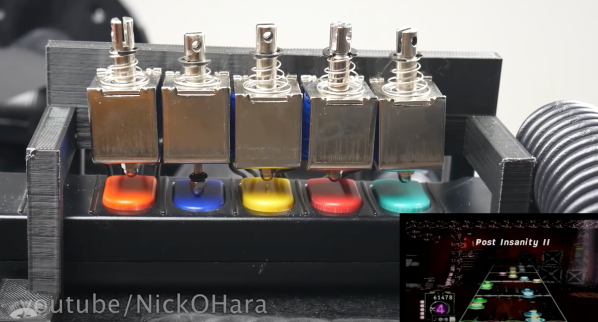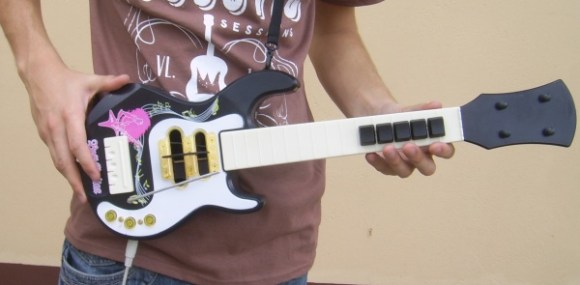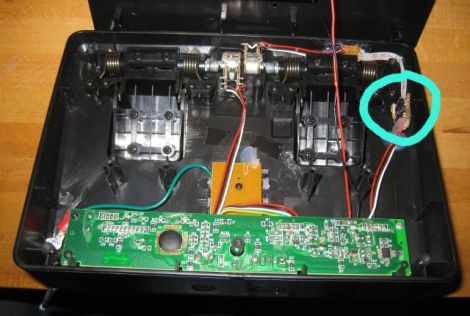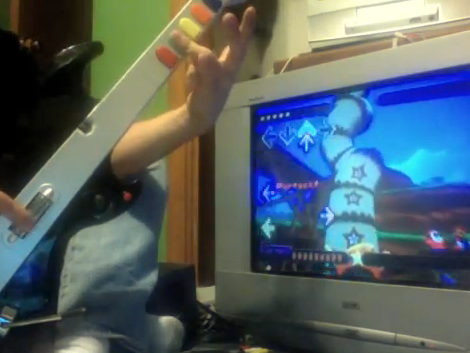Once a popular craze, most of the public has sold or stashed away their plastic video game instruments and forgotten the likes of Guitar Hero and Rockband. Having never been quite satisfied with his scores, [Nick O’Hara] set out to create a robot that could play a Guitar Hero controller. It would be easy enough to use transistors to actuate the buttons or even just a Teensy to emulate a controller and have it play the perfect game, but [Nick] wanted to replicate what it was really like to play. So after burning out a fair number of solenoids (driving them over spec) and learning on his feet, [Nick] slowly began to dial in his robot, Jon Bot Jovi.
The brains of the bot are a Raspberry Pi running some OpenCV-based code that identifies blobs of different colors. The video feed comes from a PS2 via an HDMI capture card. Solenoids are driven via an 8 channel driver board, controlled by the Pi. While it missed a few notes here and there, we loved seeing the strumming solenoid whammy rapidly on the strummer. All in all, it’s a great project, and we love the design of the robot. Whether played by a robot, turned into a synthesizer, or recreated from toy pianos and mechanical keyboards, Guitar Hero controllers offer many hacking opportunities.

















